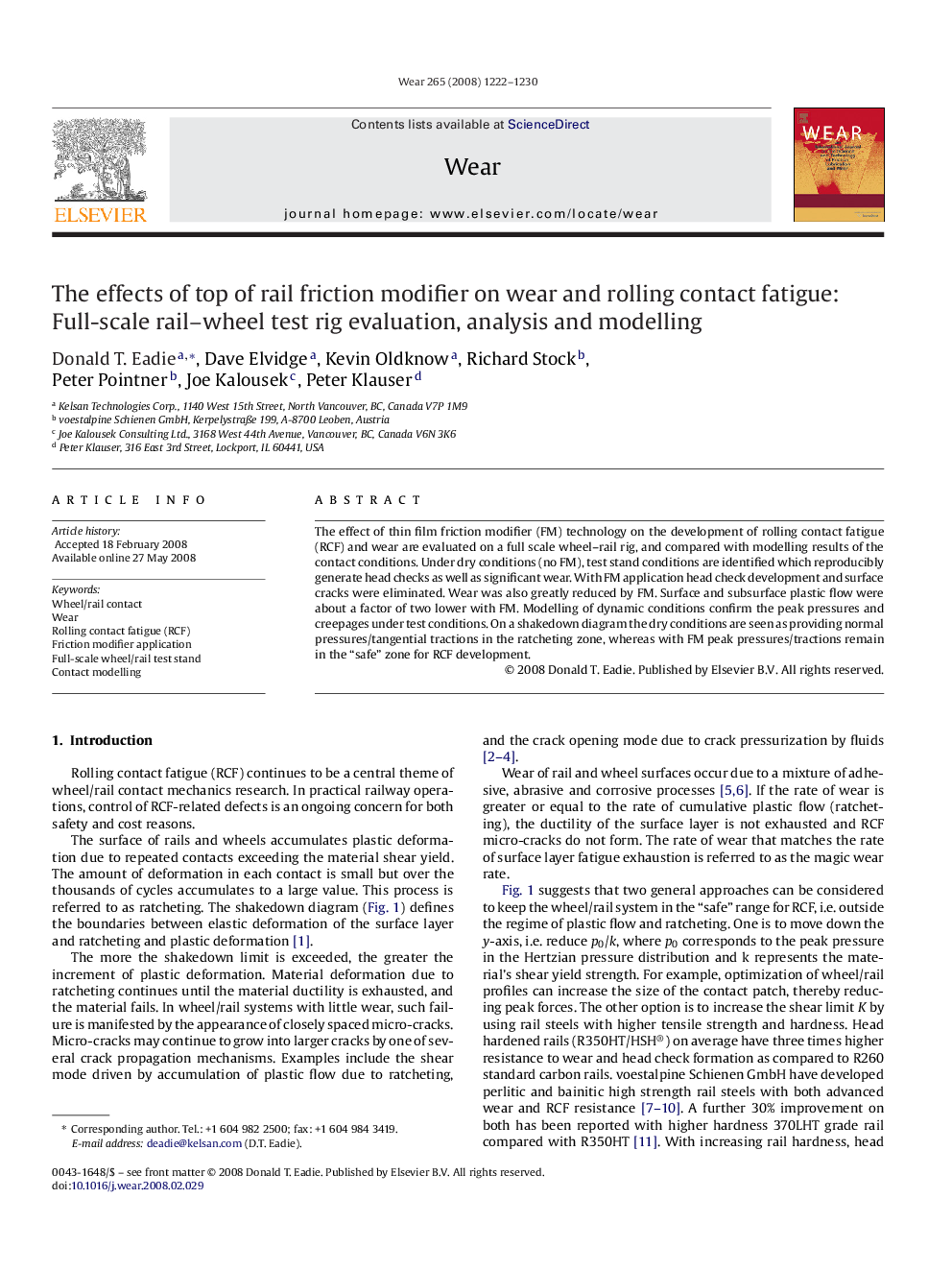| Article ID | Journal | Published Year | Pages | File Type |
|---|---|---|---|---|
| 619079 | Wear | 2008 | 9 Pages |
The effect of thin film friction modifier (FM) technology on the development of rolling contact fatigue (RCF) and wear are evaluated on a full scale wheel–rail rig, and compared with modelling results of the contact conditions. Under dry conditions (no FM), test stand conditions are identified which reproducibly generate head checks as well as significant wear. With FM application head check development and surface cracks were eliminated. Wear was also greatly reduced by FM. Surface and subsurface plastic flow were about a factor of two lower with FM. Modelling of dynamic conditions confirm the peak pressures and creepages under test conditions. On a shakedown diagram the dry conditions are seen as providing normal pressures/tangential tractions in the ratcheting zone, whereas with FM peak pressures/tractions remain in the “safe” zone for RCF development.
